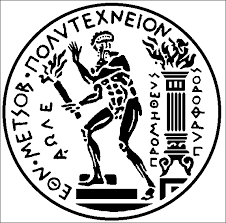185 σ.
(EL)
Το θέμα που ερευνάται στην παρούσα διάλεξη είναι οι αισθήσεις και η προσωπική ερμηνεία ως μια ξεχασμένη πτυχή της αρχιτεκτονικής εμπειρίας. Η μελέτη του θέματος ξεκινά από τη διερεύνηση του ρόλου των αισθήσεων στην βίωση του χώρου και επομένως αναφέρεται στο συσχετισμό σώματος και αρχιτεκτονικής. Αναλύονται, η μία μετά την άλλη, οι αισθήσεις ενώ δίνεται ιδιαίτερη έμφαση στις πιο παραμελημένες από αυτές όπως η ακοή, η όσφρηση και η γεύση.
Στη συνέχεια γίνεται αναφορά σε ένα πρώτο στάδιο ανάγνωσης σε σχέση με τα υλικά και την αισθητηριακή πρόσληψη αυτών και των ιδιοτήτων τους. Αναλύεται η υλικότητα στη σύγχρονη αρχιτεκτονική, ο υπερσχεδιασμός , οι επιφάνειες, η δημιουργία του υλικού, τα τεχνητά και φυσικά υλικά και τα υλικά –τοπόσημα ως στοιχεία που συμβάλλουν στην ενεργοποίηση των αισθήσεων του χρήστη ενός χώρου. Γίνεται επίσης αναφορά στο φως και τη σκιά καθώς και στην αρχιτεκτονική ενορχήστρωση άυλων στοιχείων όπως η ατμόσφαιρα, η συγκίνηση-συναίσθημα, το σενάριο και η κίνηση. Τα παραπάνω συντελούν στη χωρική υλοποίηση αισθήσεων, ιστοριών, μνήμης και εκφράσεων.
Δίνονται χαρακτηριστικά παραδείγματα για κάποια από τα αρχιτεκτονικά εργαλεία που συμβάλλουν στην ενεργοποίηση των αισθήσεων και των συναισθημάτων όπως το Μουσείο Quai Branly, το Blur Pavillion, ο κήπος της Εξορίας στο Εβραϊκό Μουσείο στο Βερολίνο, τα Θερμά λουτρά στο Vals, το Μνημείο του Ολοκαυτώματος, καθώς και έργα του Γιάννη Κουνέλλη.
Έχοντας αναλύσει τα υλικά και άυλα στοιχεία που συμβάλλουν στην αφύπνιση των αισθήσεων, γίνεται μία προσπάθεια προσέγγισης μιας πιο προσωπικής ερμηνείας του χώρου η οποία προκαλεί συναισθήματα, συνειρμούς και αναμνήσεις πολύ διαφορετικά για τον καθένα.
Η ποικιλία στην ερμηνεία του ίδιου χώρου εξαρτάται από τα προσωπικά βιώματα και το κοινωνικό και πολιτιστικό υπόβαθρο, την εποχή που ερμηνεύεται ο χώρος καθώς και τη νοηματοδότηση των υλικών από το χρήστη. Τελειώνοντας αναφέρουμε την παρουσία μιας έκτης αίσθησης, του «ανοίκειου», η οποία μπορεί να έχει πολλές μορφές και προκαλείται συνήθως από τη διαταραχή ή τη διέγερση μιας εκ των πέντε γνωστών αισθήσεων.
Τέλος καταλήγουμε στα συμπεράσματα και στο ερώτημα που εγείρεται σχετικά με την προσέγγιση της αρχιτεκτονικής με ένα νέο τρόπο, τόσο από τον αρχιτέκτονα όσο και από το χρήστη.
(EL)
The issue that is investigated in this lecture is: the senses and the personal interpretation as a forgotten aspect of the architectural experience. The study of the subject starts by exploring the role of the senses in experiencing space and therefore refers to the correlation of body and architecture. The five senses are analysed with a particular emphasis on the most neglected ones like hearing, smell and taste.
Then, a reference is made to a first stage of experiencing space in relation to the materials and the sensory uptake of them and their properties. In addition, the materiality in contemporary architecture, the over-designing, the surfaces, the creation of the material, the artificial and natural materials in combination with the materials-landmarks, are analysed as elements that contribute to the stimulation of the senses of the user. A reference is also made in light and shadow and the orchestration of the architecture intangibles such as the atmosphere, the emotion-feeling, the motion and the scenario. These, contribute to the spatial implementation of senses, history, memory and expressions.
The given examples are chosen in order to represent some of the architectural tools that contribute to the activation of the senses and emotions. Some of the architectural examples are the Museum of Quai Branly, the Blur Pavillion, the Garden of Exile at the Jewish Museum in Berlin, the Thermal Baths in Vals, the Holocaust Memorial, and artworks by Yannis Kounellis.
Having analyzed the tangible and immaterial elements that contribute to the awakening of the senses, we attempt to approach a more personal interpretation of the space which causes feelings, associations and memories very different for each one of the users.
The variety in the interpretation of the same space, depends on the personal experiences and the social and cultural background, the era and the meaning of the materials. We, also, mention the presence of a sixth sense, the so-called "unfamiliar", which can have many aspects and usually is caused by the disorder or the stimulation of one of the five known senses.
Finally, we come to the conclusions and the question raised about the approach of architecture in a new way, both from the architect and the user.
(EN)
 National Technical University of Athens
National Technical University of Athens

